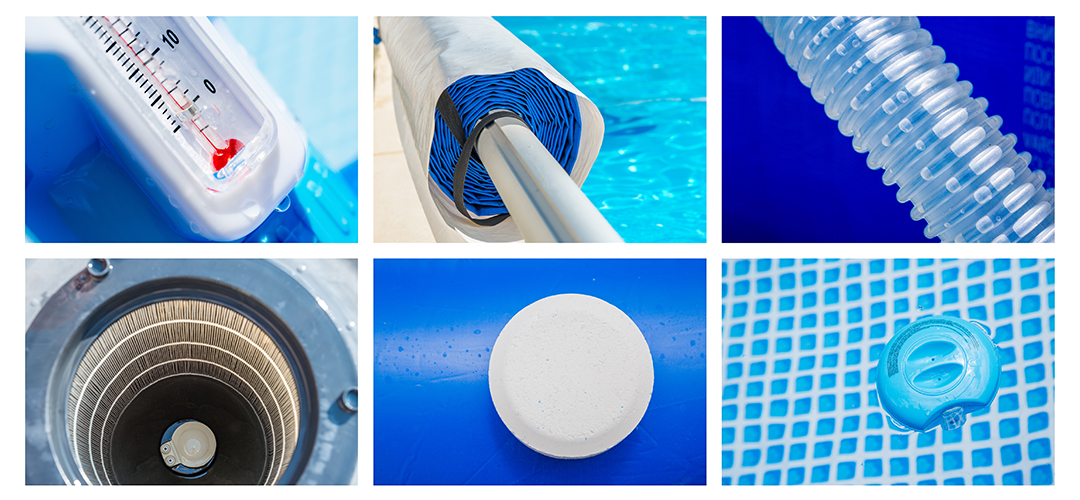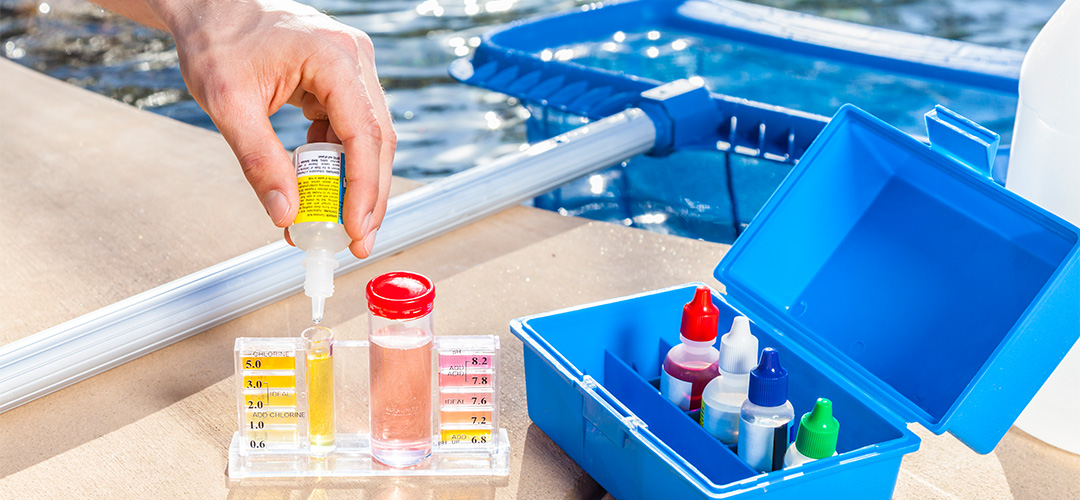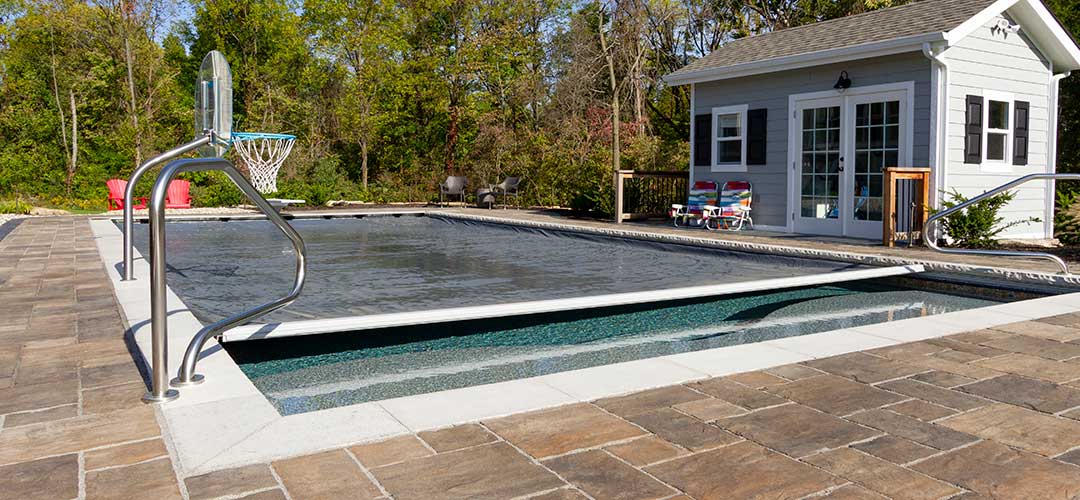
Winter is over, and spring is finally here. Temperatures are rising. The sun is shining. A dip in the pool sounds pretty good right about now.
But don't jump in quite yet! If your pool has been closed all winter, you'll need to do a little prep work to get your pool ready for another season of fun. Don't worry, though. Opening an inground or above ground pool is easy. Follow a few easy simple and you'll be perfecting your cannonball in no time!
Step 1: Clean up debris and check for wear and tear.
Before you open your pool, take some time to survey the area around your pool. Trim overgrown trees and hedges. Sweep away nearby leaves. Check your deck for damage, wear, and tear and address any issues before you open your pool for the season. Be sure to clean and repair any deck furniture so that it is safe for use. You should also check pool equipment like safety rails, slides, rescue equipment, ladders, and diving boards.
Step 2: Inventory your pool chemicals.
You'll want to have all of your chemicals ready to go before you start opening your pool.

Chemicals Checklist:
Need to do a pre-opening pool chemical supply run? Here's what you'll need to get the job done right:
- A good test kit or test strips for checking your pool's water chemistry
- Chlorine for daily sanitizing
- Shock treatment
- Chemicals for properly adjusting your pool's water balance
- Algaecide treatment
- Filter cleaner or other necessary problem prevention products
Step 3: Remove the Cover
During the fall and winter months, your swimming pool cover can accumulate water and debris. Use a pool cover pump to remove that old, dirty water and keep it out of your swimming pool. Once the cover is removed, hose it off and give it a thorough cleaning (we recommend using a specially formulated cleaner, such as PoolStyle Clean-N-Store), then allow it to dry.

Storing Your Pool Cover
You can prolong the life of your pool cover by storing it safely away from insects, rodents, and the elements. Once your swimming pool cover is clean and dry, tightly roll it and store it indoors or in a garage.
Step 4: Inspect the Pool
It's time to give your pool a good, pre-opening once-over. Here are a few essential things to put on your to-do list:
- Remove drain plugs or winterizing plugs from the surface skimmers and wall returns, and restore directional fittings.
- Inspect the filter and pump for possible damaged or worn parts and replace as necessary.
- If you removed your underwater pool lights, now's the time to reattach them.
- Inspect your pool finish and decking for any damages or wear and tear issues.
- Check your tile and remove calcium build up and stains with the appropriate swimming pool scale removal product. Please contact your local pool professional for the best products to use.
- Inspect the interior of your pool for damage and make repairs as needed.
Hairline Cracks and Fiberglass Pools
Hairline cracks are normal in fiberglass pools. Because fiberglass pools have a gel coating, these small cracks typically won't affect the integrity of your pool. However, if your fiberglass pool has large cracks or holes you should call your local pool professional right away.
Step 5: Fill Pool to Middle of Waterline Tile and Do Final Debris Removal
Grab a garden hose and fill the pool until the water level reaches the midpoint of the waterline tile or middle of the skimmer opening. Once you've got the water level where it needs to be, you can now clean leaves, twigs and debris from the pool's bottom by using a pool brush. Also be sure to remove any debris from the basket.
Step 6: Turn on the Pool Filter and Test the Water
You're almost there! All you have to do now is get the filter up and running. Turn on the filter and run it for 12 to 24 hours to circulate the water before testing or adding chemicals (remember to use new testing strips and not expired ones).
It is recommended to have your water tested professionally when opening your pool and once monthly throughout the season. You can always bring a water sample to a pool professional for proper analysis. Your pool professional will provide you with instructions for balancing your pool water. They can test the water's pH level, alkalinity, calcium hardness and chlorine levels. In addition to shocking the pool, they may be able to also recommend that you add a stabilizer, phosphate remover, metal treatment product or algaecide to your pool before it's ready for the warm weather.
Continue to run the filter for a few days, vacuuming out any debris that has settled. When the water is clear and the chlorine levels have come down, your pool is ready for swimming! Enjoy your pool!
Maintaining Your Pool Chemistry Throughout the Swim Season
Remember to test your pool water weekly as well as bring it to your local pool professional monthly or whenever you're experiencing issues. Best maintenance practices will keep your pool's water clear and prevent poor water conditions. Remember to sanitize daily, shock routinely/weekly to remove contaminants and add a small preventative dose of algaecide weekly to prevent algae outbreaks.
Pro Tip: Be sure to check your filter and return lines for damage, cracks, or leaks. If you have a sand filter, add sand if needed. If you have a cartridge filter, check the cartridge and clean/replace as needed.







